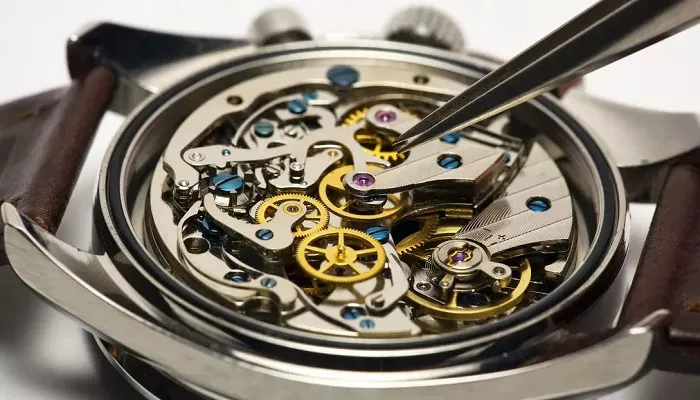Mechanical watches are marvels of craftsmanship and engineering. Unlike electronic timepieces, they rely on purely mechanical components working together to measure time accurately. The creation of a mechanical watch is a complex process involving precise design, manufacturing, and assembly. This article provides a detailed examination of how mechanical watches are made. It covers every critical step, from initial design to final testing, highlighting the skill and technology involved. The goal is to give readers a thorough understanding of the making process behind these timeless instruments.
How Are Mechanical Watches Made?
Before any parts are made, the watch design is carefully planned.
Concept and Movement Selection
Designers decide on the watch’s purpose, size, style, and complications. Choosing the movement type is crucial.
- Movements can be simple (time-only) or complex (with chronographs, calendars).
- Designers create technical drawings detailing every component’s dimensions.
CAD Modeling and Prototyping
Computer-Aided Design (CAD) software is used to build detailed 3D models.
- Simulates the interaction of parts.
- Allows for adjustments to improve function and fit.
- Prototypes may be 3D printed or hand-crafted for testing.
Material Choice
Materials are selected for durability, aesthetics, and functionality.
- Common metals include stainless steel, brass, and precious metals.
- Synthetic jewels like rubies reduce friction in moving parts.
Manufacturing Components: The Building Blocks of the Movement
Creating mechanical watch components requires precision machining and finishing.
Fabricating the Main Plate and Bridges
The main plate forms the foundation holding all parts.
- Made from brass or other metals.
- Machined using CNC (Computer Numerical Control) machines.
- Bridges secure wheels and gears, also CNC-machined with high accuracy.
Cutting and Shaping Gears and Wheels
Gears transmit power from the mainspring to the hands.
- Manufactured through stamping, cutting, or milling.
- Gear teeth are carefully shaped to mesh smoothly.
- Wheels are polished to reduce friction.
Crafting the Balance Wheel and Hairspring
The balance wheel oscillates to regulate time.
- Made from temperature-resistant alloys.
- The hairspring, a tiny coiled spring, controls the balance’s motion.
- Both are assembled and adjusted for precise timing.
Creating the Escapement Mechanism
The escapement controls the release of energy from the mainspring.
- Components include the escape wheel and pallet fork.
- Each part is cut, polished, and assembled with extreme precision.
- Proper functioning ensures accurate movement of the watch hands.
Manufacturing the Mainspring: The Power Source
The mainspring stores energy to drive the watch.
- Made from special spring steel.
- Coiled tightly to fit within the barrel.
- Wound manually or automatically to power the movement.
Dial and Hands: The Face of the Watch
The dial displays time and other functions.
Dial Production
- Made from metal, enamel, or other materials.
- Markers and numerals are applied by printing, engraving, or painting.
- Luminous materials may be added for visibility in the dark.
Hands Manufacturing
- Hands are stamped from metal sheets.
- Shaped and polished to precise dimensions.
- Often coated or painted for aesthetic appeal.
Case Construction: Protecting the Movement
The watch case houses and protects all components.
Material Selection and Shaping
- Cases are made from stainless steel, titanium, gold, or ceramic.
- Shaped by forging, casting, or CNC machining.
- Polished and finished for durability and style.
Crystal Installation
- Watch glass, or crystal, protects the dial.
- Made from sapphire, mineral glass, or acrylic.
- Cut and polished to fit securely into the case.
Assembly: Bringing All Components Together
Assembly is the heart of mechanical watchmaking, requiring skill and patience.
Movement Assembly
- Watchmakers carefully place the main plate on the workbench.
- Wheels, gears, escapement, balance wheel, and mainspring are installed step-by-step.
- Jewels are set to reduce friction.
- Components are adjusted for smooth operation.
Lubrication
- Tiny amounts of specialized oils are applied to moving parts.
- Lubrication reduces friction and wear.
- Proper lubrication is critical for longevity and accuracy.
Dial and Hands Installation
- The dial is attached to the movement.
- Hands are pressed onto their respective pinions.
- Alignment and clearance are verified to prevent interference.
Casing the Movement
- The assembled movement with dial and hands is placed inside the case.
- The case back is sealed, often screwed or snapped into place.
- Gaskets and seals are installed for water resistance.
Quality Control and Regulation: Ensuring Precision and Reliability
Each mechanical watch undergoes rigorous testing before release.
Timing Regulation
- Watches are tested on timing machines.
- Adjustments to the balance wheel and hairspring improve accuracy.
- Watches are regulated to meet standards for daily gain or loss of seconds.
Water Resistance Testing
- Cases are tested for pressure resistance.
- Ensures protection from moisture and dust.
Final Inspection
- Visual and functional checks confirm flawless operation.
- Watches are polished and cleaned.
- Packaged for delivery.
Conclusion
Mechanical watchmaking blends art, science, and engineering. Every stage, from design through assembly and testing, demands precision and expertise. The result is a timepiece that is not only functional but also a symbol of craftsmanship. Understanding how mechanical watches are made enriches appreciation for these mechanical wonders, reminding us of the human skill behind every tick.
Related Topics:

